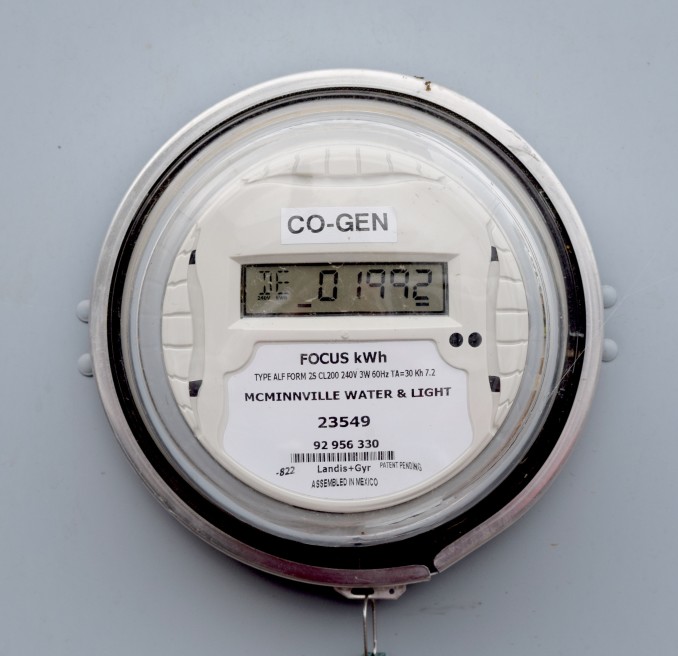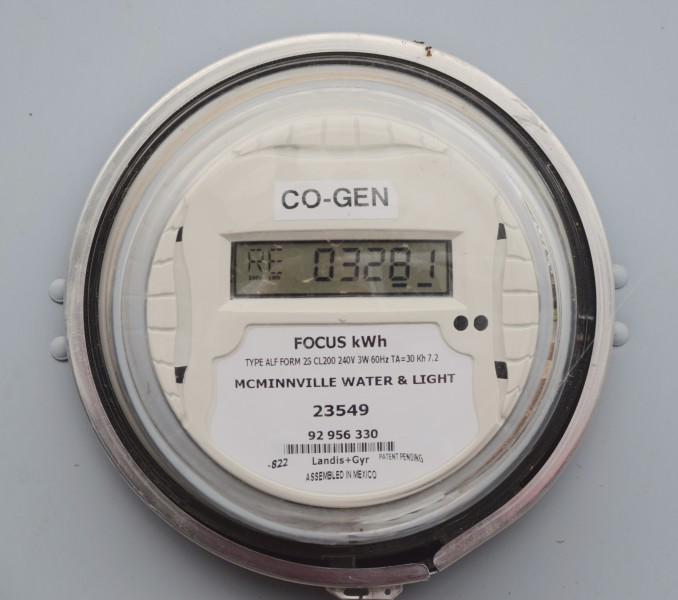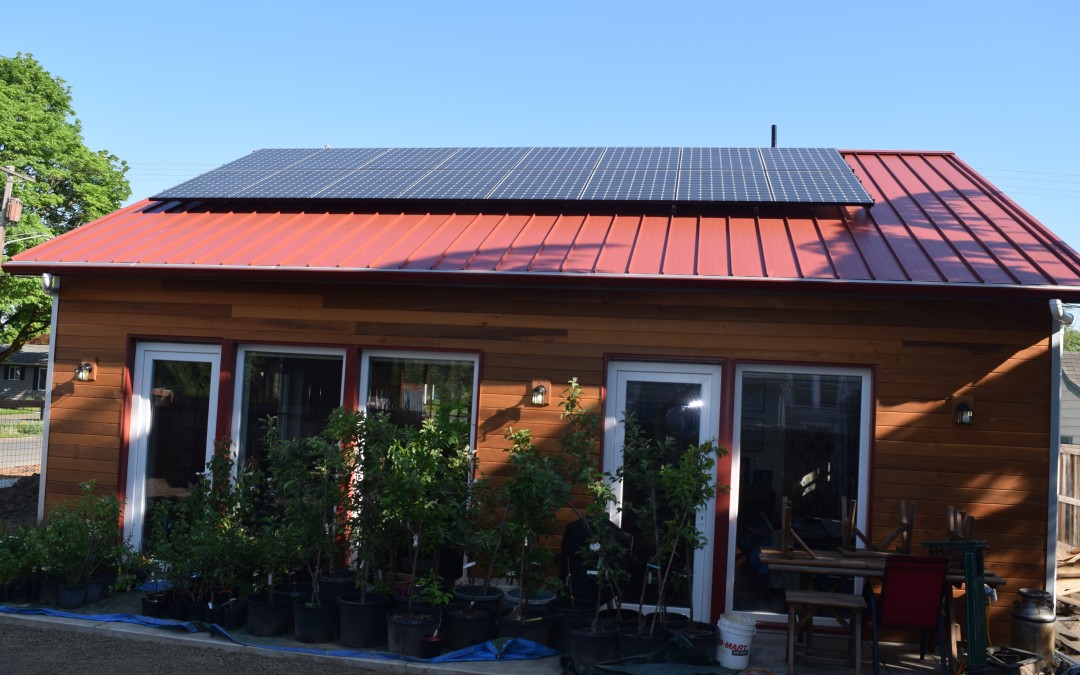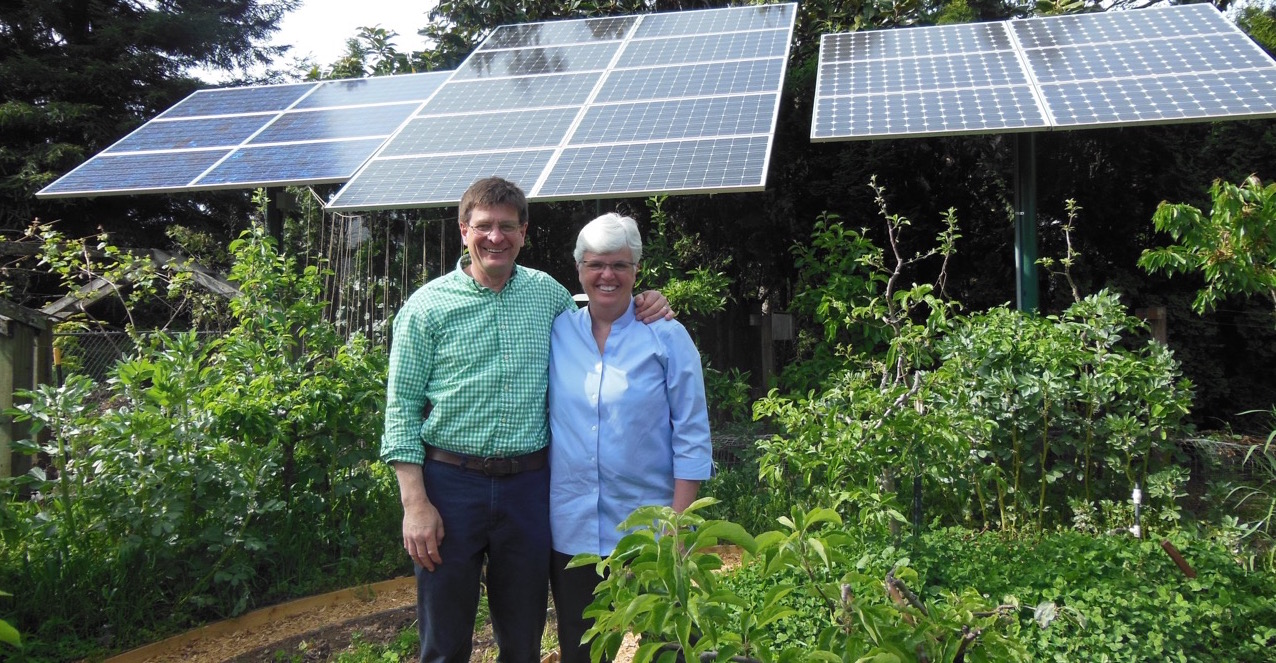Sun Power: Why Haven’t You Already Invested In Solar?
This sixth segment of Passive House Movie is focused on the photovoltaic solar generation system. It is sized to produce enough electricity, over a year’s time, to power our home and charge our electric car. In builder lingo, ours is better than Net Zero. It is actually a Net Positive house: most determinations of Net Zero don’t include the car. People are surprised to know that charging a Nissan Leaf (a full electric car) for 12-15,000 mile/year requires the same amount of electricity (3500 kWh) as it takes to power our house! We have 16 panels on our roof. We’d need only 8 to run if we were only running the house. John Mead’s description is very rudimentary here, mostly because the system hadn’t been installed at movie making time. So let’s get up to speed on the facts:
THE SYSTEM
- 16 SunPower panels on the south facing roof.
- Generation capacity: 327 watts/panel.
- Total capacity = 5,232 watts.
- Projected Annual Generation = 6,881 kWh.
- Generation will operate house and charge car.
- Inverter in garage changes DC to AC.
- Kindle in living room tracks generation by day/wk/mo.
- SunPower offers a 20-year warranty (industry standard is 10).
THE COST
- Total Cost = $25,899*
- Federal Income Tax Credit = -7,770
- Oregon State Tax Credit = -6,000
- Value of Generation in 1st 5 yrs = -3,388
Out-of-pocket cost after 5 yrs = $8,741
Folks often ask if we’re hooked to the grid. We are. Oregon requires all utilities to offer Net Metering to their customers. We are net metered. That is, we only receive power from the panels when the sun is in session. At night and on dark days we require the grid. Whenever there is more power being produced by the panels than we are using in the house, the meter turns backward. We take from the grid and we give back. The Net over a year’s time will be Zero. Thus Net Zero. Our utility installed a Co-Generation Meter in place of our former one. It gives two readings: 1. How much the Grid has delivered to us, and 2. How much we have delivered to them. Since we began in June, they have delivered 1,992 kWh to us. We have delivered 3,281 kWh to them. That will start to even out in the W. Oregon monsoon season!

Meter—how much they’ve delivered to us—1,992 kWh

Meter—-how much we’ve delivered to them—-3,281 kWh
Our biggest question for all of you who haven’t yet invested in solar is: “Why not?” Of course there are lots of good reasons. You live in the shade. You rent. The kids are in college. Affording the up-front costs. We get it. But we want to make sure you know there are now a variety of ways to get panels on your roof and there are many more ways of investing in solar beside roof panels. For instance, to get panels on your roof, you can:
- Buy the system: and maintain it yourself.
- Lease the system: and maintain it yourself with option to own.
- Rent your roof: a solar company pays you rent: they maintain the system.
- Power Purchase Agreements: you pay the same rate you’ve been paying your utility for power, but you pay the solar contractor instead of your utility and, at the end of 20 years, you own the system which supplies all your power free. Ask your utility about this.
But if putting solar panels on your roof isn’t an option, you can:
- Put panels on someone else’s roof.
- Actually invest your money in solar manufacture for a return.
A Homeowners Guide To Solar Financing is the best resource available to help you know your options. Google it now!!!! Download it. To explore these options and more, consult the Guide. Talk with solar contractors in your region. Contractors like SolarCity offer the rent and lease-to-own options in our region. In the community of Corvallis, Oregon, down the road from us, there is an amazing project called Seeds for the Sol, where you can donate to a fund that gives zero interest loans for low-income families in Corvallis to purchase photovoltaic systems. You can also buy $6,000 of Oregon tax credit s for $5,400 receiving a 3.3% return over a four year period. Contact them and find out more.
For those of you who want your investments to do good instead of harm, ask you investment professional to find investments in alternative energy. As part of our fossil free portfolio, our family has investments in the following:
- Greenbacker Renewable Energy Co.
- 8Point3 Energy Partners
- Hannon Armstrong
- Pattern Energy Group
These are just a few of the investments available to us. Bill McKibben of 350.org has said, “If it’s wrong to ruin the planet, it’s wrong to profit from the ruin.” Fossil fuel investments are tanking. All of these companies pay healthy dividends in the 4.5 to 7.0% range. If you aren’t yet doing solar, I hope this will nudge you to invest in the world of God’s dreams. It’s a different kind of power.
6-Solar – Cellar Ridge Pitney Passive House V2 from Ryan Ao on Vimeo.









Recent Comments